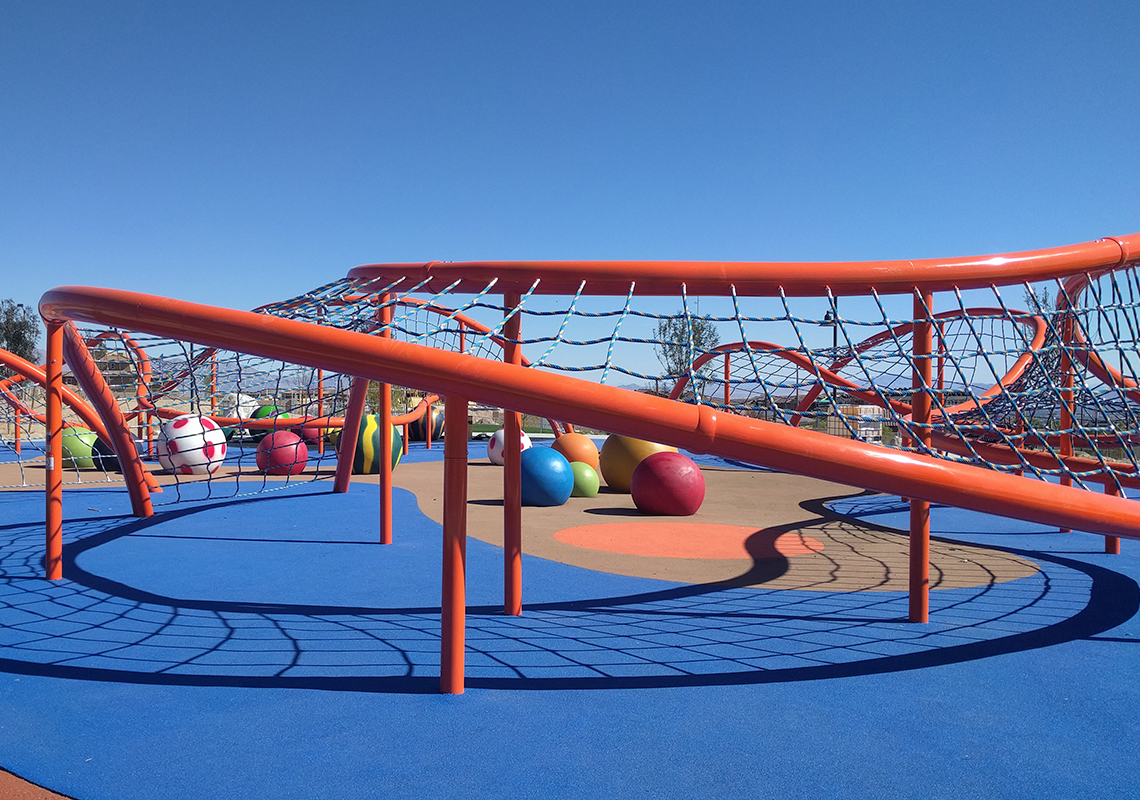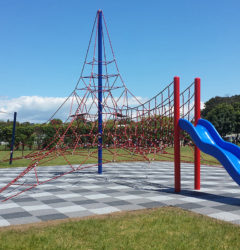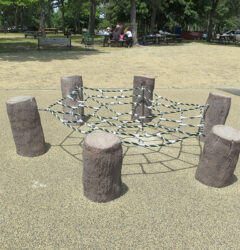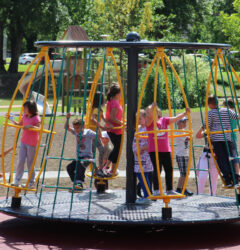27 Apr

The primary intention behind playground surfacing is for child safety. The most frequent injuries at playgrounds are from falls so proving a safe landing surface a top priority.
Keeping in line with industry standards, surfacing requires an appropriate amount of thickness and must extend beyond the equipment areas to correspond with fall zones. Fall zones are the areas under and around games and structures where it is reasonable to expect that a child may land after a fall. Fall height – the maximum fall height for which a life-threatening head injury is likely not to occur – determines the depth and other dimensions of the protective surfacing. Falls are inevitable, at any playground with any ground surface but the more shock absorbing the materials, the safer we can all feel. A safe playground must include safe surfacing to reducing the likeliness of a serious injury.
We’ve come a long way since the old-school playground surfaces that we often either just grass or dirt. Grass used to be considered a safe surface, but it can be quite slippery, and offers practically no cushioning during falls.
With so many options that all meet industry standards, there are a lot of questions that need to be asked prior to determining what type of surface will work best for your overall playground design. Surfacing definitely adds a cosmetic appeal but must be balanced out with what your needs are beyond appearance.
There are a lot of questions to ask yourself when deciding what type of surfacing to use in playground developments, here are a few key points to consider:
- What age group is this playground being designed for?
- How much is your overall budget?
- How much time do you are you willing to spend on maintenance?
- What is the overall look you’re trying to achieve?
- Do you have a theme?
- Will the playground be used year-round?
Once you’ve narrowed down your parameters, you can begin to think about what types of surfacing may work best.
There are loose fills – sand, gravel, wood chips, mulch. Loose fills tend to be more cost effective and require minimal site preparation. They have great impact absorption and meet all safety standards. Wood chips or sand can provide a natural look but require decent drainage. They may not be the best fit for locations with freezing temperatures.
These types of surfacing are extremely limiting for children with disabilities that require wheelchairs or walkers. Loose fill compresses over time, which must be leveled back up to maintain safety standards. These types of loose materials tend to bury sharp objects, broken glass for example, which can make it harder to spot harmful items. Neighbourhood animals tend to be drawn to these types of fills for their own personal use, as well, leading to potential microbial growth.
Synthetic turfs are aesthetically pleasing and provide a more natural look. This type of surface is popular on college fields because you can use the turf colour choices to create a branded look with any logos you might want to show. Turfs provide cooler surface areas, making them a nice option for warmer locations. Turfs hold up quite well over their lifetime, they are very durable.
Poured-in-place rubber surfacing is like having a built-in sensory experience, with the fun squishiness of it under your feet. Poured-in-place rubber surfacing has a higher initial investment, but it is often a more popular selection because it’s so low-maintenance. Environmentally conscious developers like this method it uses recycled tires. It’s blends well in urban areas. You can add play value by creating different patterns or shapes on the surfacing to compliment the playground designs.
Rubber surfacing not only meet or exceed the safety standards for playgrounds, but the equally important benefit is the increased accessible for anyone with physical disabilities. They are great for wheelchairs, walkers, crutches, and in general they reduce tripping risks.
With plenty of options to choose from, there’s always a good surfacing match for your playground design. We are here to help you decide what surfacing is best for your project. Our design teams help bring the whole picture together to provide you with a clear vision of what the entire playground area will look like.









Follow Dynamo Playgrounds